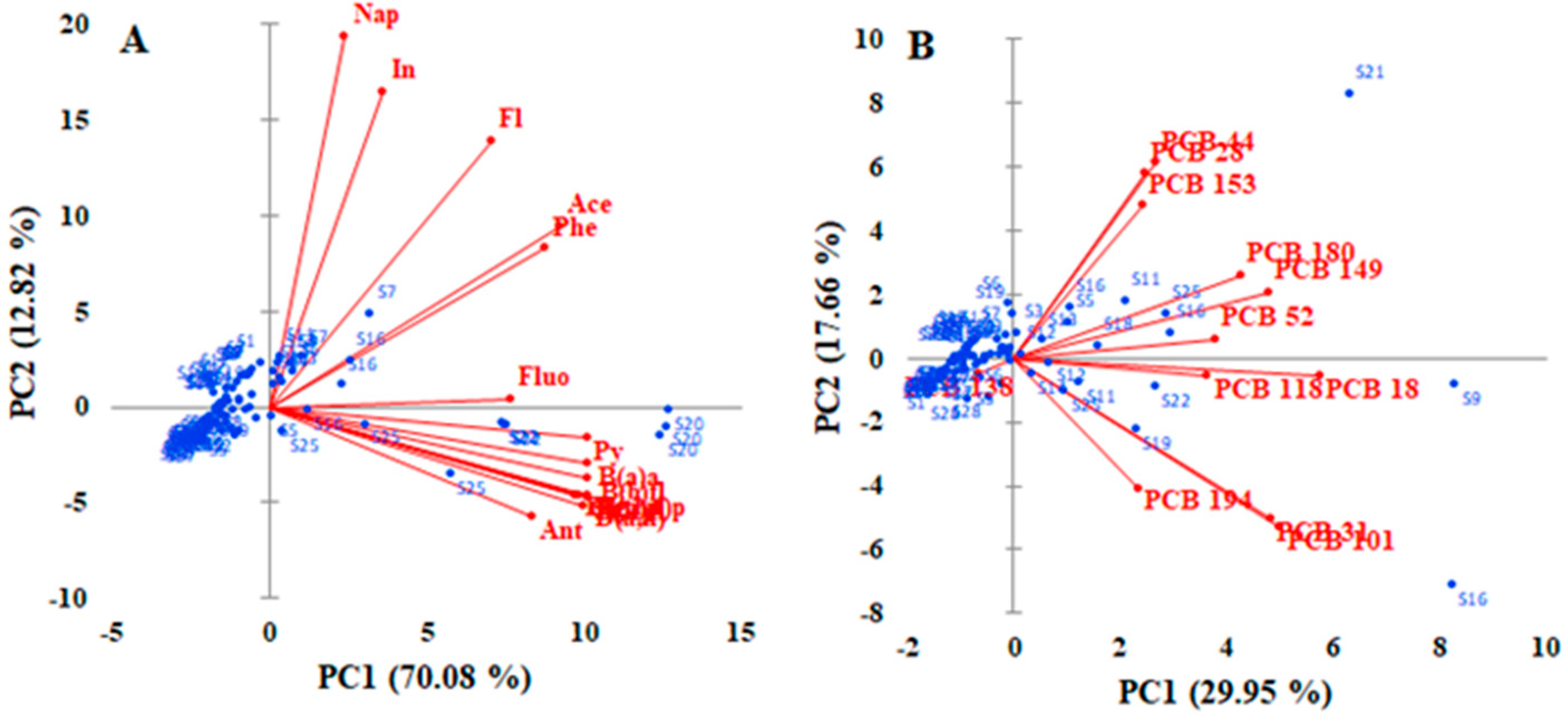Occurrence and Distribution of Some Organic Contaminants in Sediments from Olt River, Romania †
Acknowledgments
Reference
- Mitra, S.; Corsolini, S.; Pozo, K.; Audy, O.; Sarkar, S.; Biswas, J.K. Characterization, source identification and risk associated with polyaromatic and chlorinated organic contaminants (PAHs, PCBs, PCBzs and OCPs) in the surface sediments of Hooghly estuary, India. Chemosphere 2019, 221, 154–165. [Google Scholar] [CrossRef] [PubMed]

Publisher’s Note: MDPI stays neutral with regard to jurisdictional claims in published maps and institutional affiliations. |
© 2020 by the authors. Licensee MDPI, Basel, Switzerland. This article is an open access article distributed under the terms and conditions of the Creative Commons Attribution (CC BY) license (https://creativecommons.org/licenses/by/4.0/).
Share and Cite
Ciucure, C.T.; Geană, E.-I.; Popescu, D.I.; Chitu, A.; Rădulescu, A.-M.; Ionete, R.E. Occurrence and Distribution of Some Organic Contaminants in Sediments from Olt River, Romania. Proceedings 2020, 57, 27. https://doi.org/10.3390/proceedings2020057027
Ciucure CT, Geană E-I, Popescu DI, Chitu A, Rădulescu A-M, Ionete RE. Occurrence and Distribution of Some Organic Contaminants in Sediments from Olt River, Romania. Proceedings. 2020; 57(1):27. https://doi.org/10.3390/proceedings2020057027
Chicago/Turabian StyleCiucure, Corina Teodora, Elisabeta-Irina Geană, Diana Ionela Popescu, Alin Chitu, Andreea-Maria Rădulescu, and Roxana Elena Ionete. 2020. "Occurrence and Distribution of Some Organic Contaminants in Sediments from Olt River, Romania" Proceedings 57, no. 1: 27. https://doi.org/10.3390/proceedings2020057027
APA StyleCiucure, C. T., Geană, E.-I., Popescu, D. I., Chitu, A., Rădulescu, A.-M., & Ionete, R. E. (2020). Occurrence and Distribution of Some Organic Contaminants in Sediments from Olt River, Romania. Proceedings, 57(1), 27. https://doi.org/10.3390/proceedings2020057027





